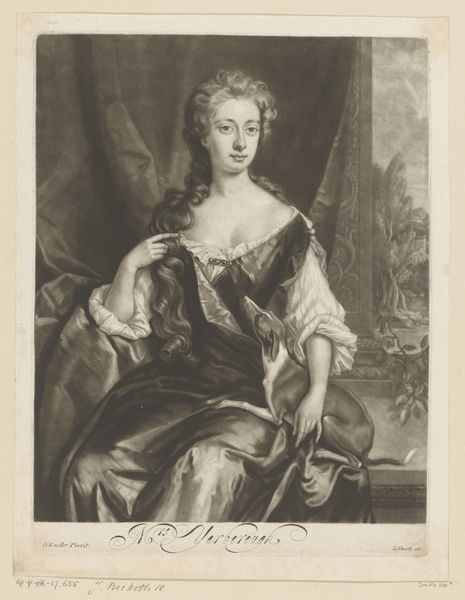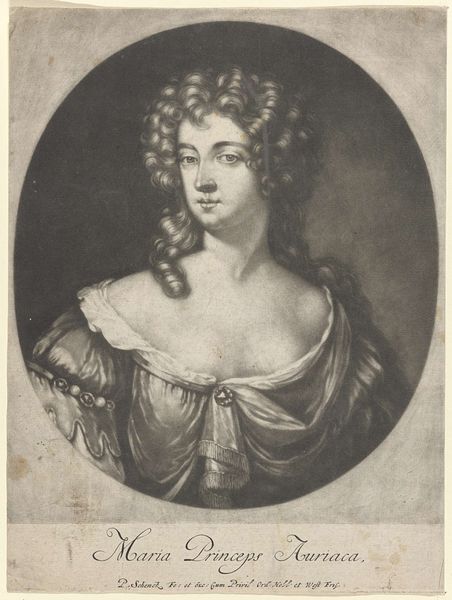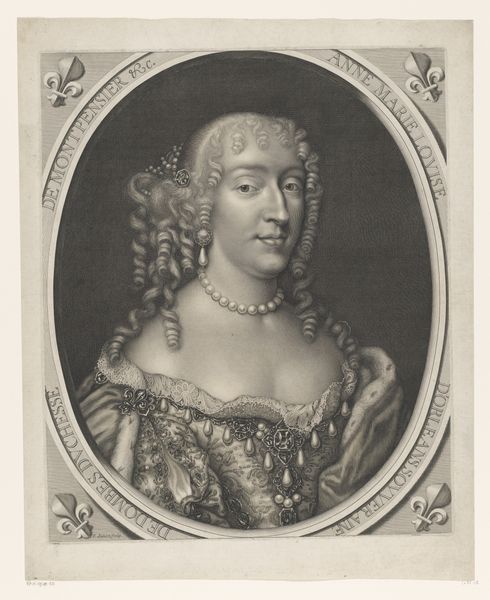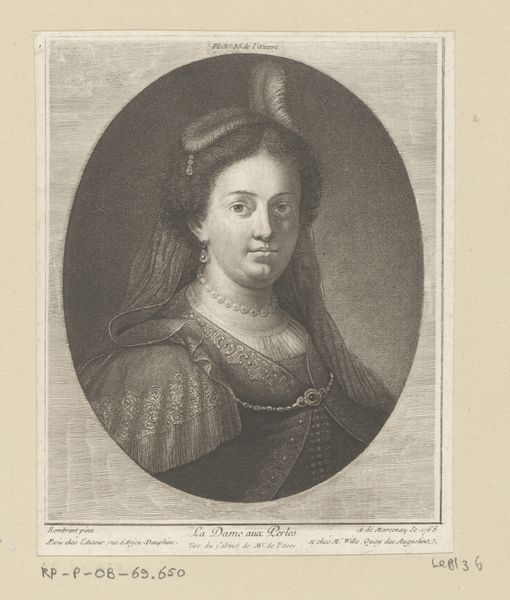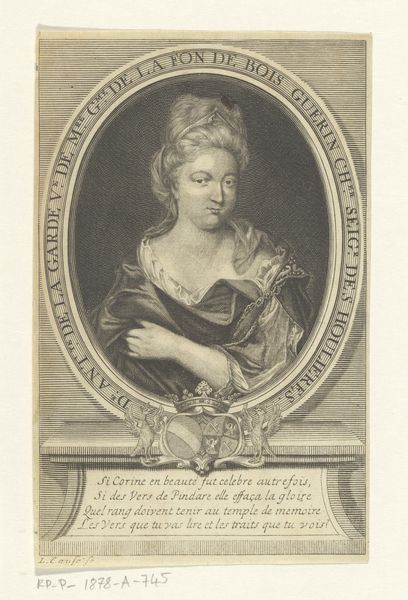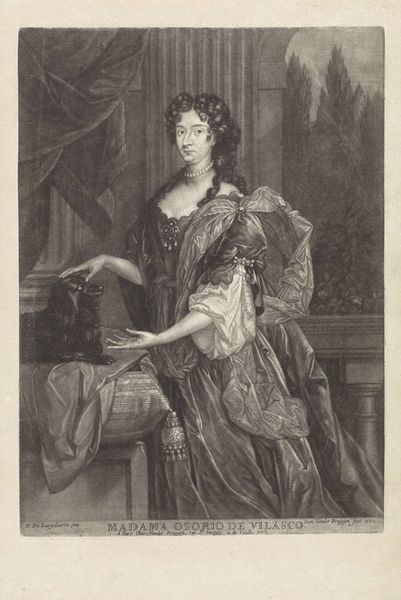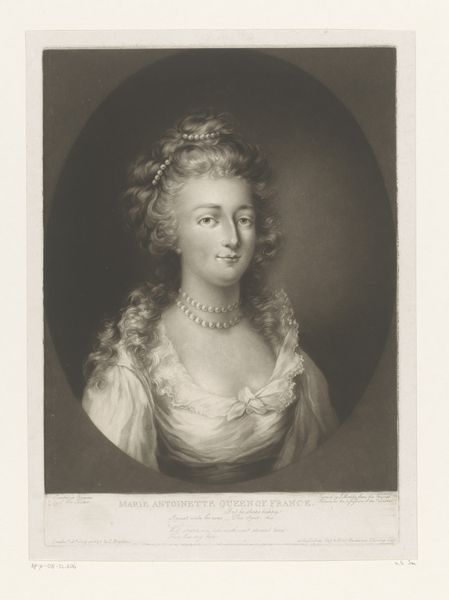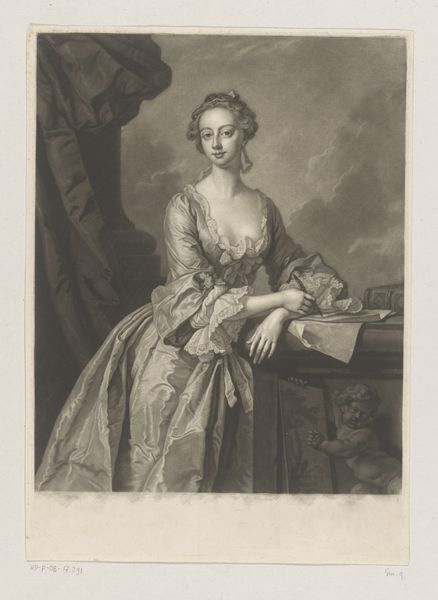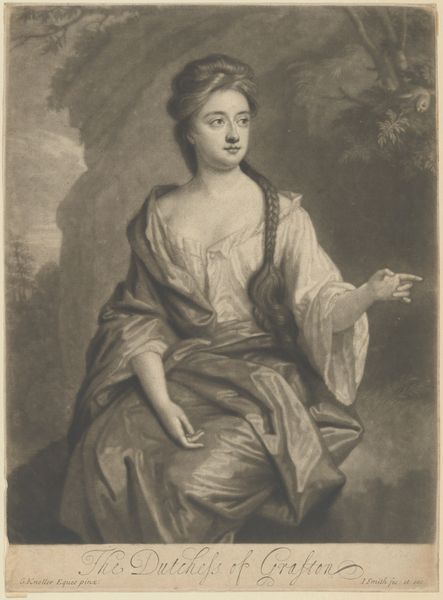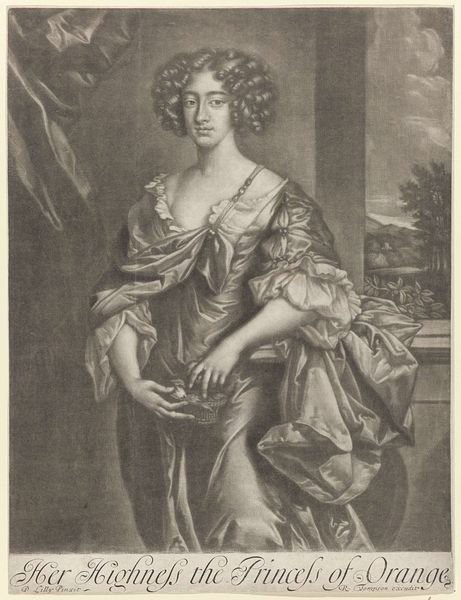
Portrait of Susanna Lunden, sister of Helena Fourment 1769
0:00
0:00
Dimensions: Sheet (Trimmed): 20 in. × 14 1/8 in. (50.8 × 35.9 cm)
Copyright: Public Domain
This is William Pether’s mezzotint engraving of Susanna Lunden, sister of Helena Fourment. Observe the floral ornament crowning her hair. Throughout history, floral motifs have symbolized life, renewal, and beauty. In classical antiquity, wreaths and garlands denoted status, joy, and celebration. Think of Botticelli's "Primavera," where Flora scatters blossoms, heralding spring, or the floral crowns adorning Roman emperors, signifying power and divine favor. Yet, the floral crown’s evolution is fascinating. During the Renaissance, it was revived to evoke classical ideals of beauty and virtue, and it became associated with the concept of "Venus Humanitas". What once symbolized divine authority now suggested a more earthly, humanistic ideal. Subconsciously, we link the motif to a tradition of representing beauty and grace. Like a recurring dream, the floral motif reappears. Its cyclical journey through art history mirrors our own evolving perceptions, reflecting our enduring fascination with beauty and the transient nature of life.
Comments
No comments
Be the first to comment and join the conversation on the ultimate creative platform.
